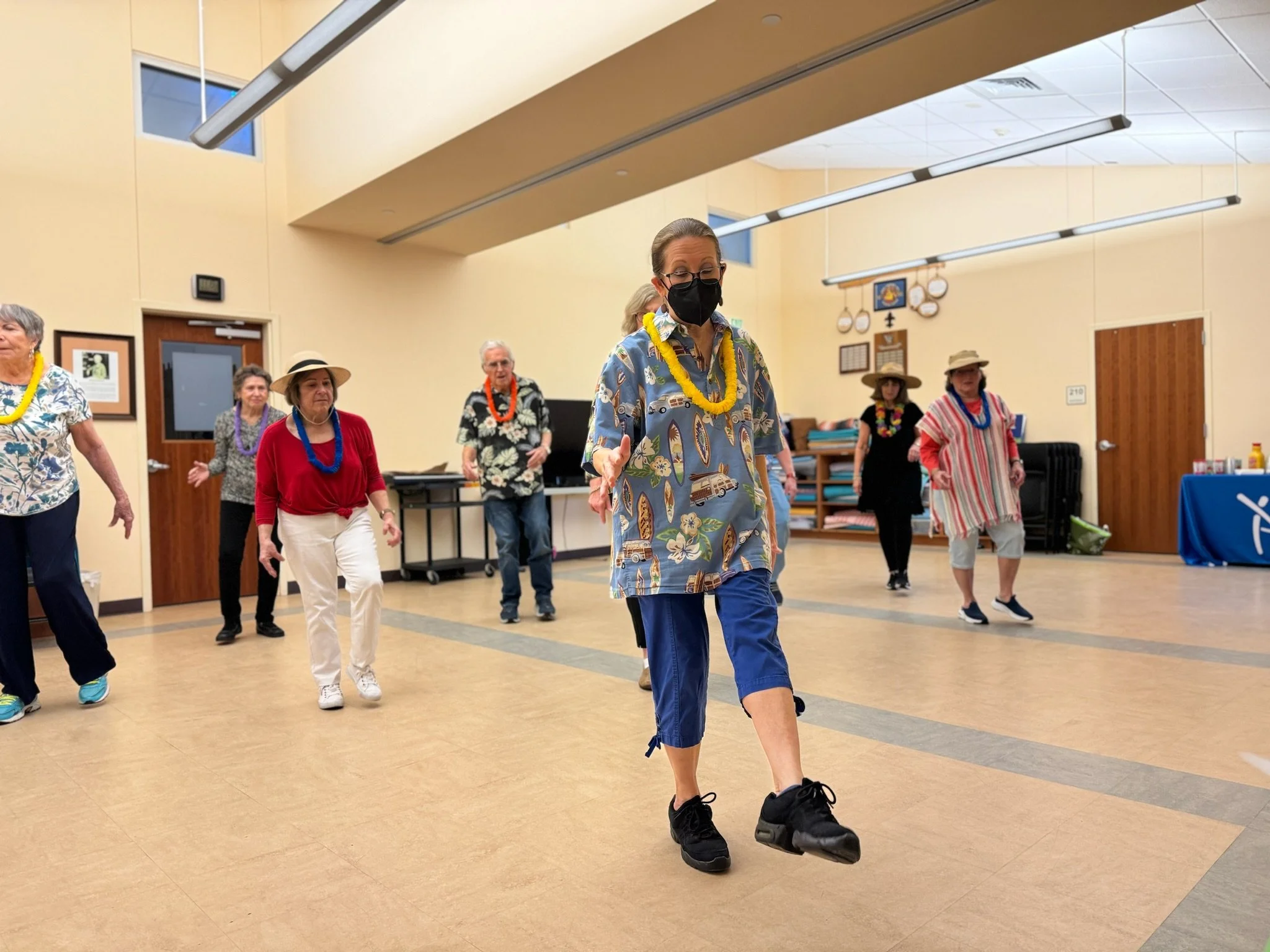The Power of Parkinson’s Dance
Difficulties in gait and balance are common symptoms present in those with Parkinson’s. These symptoms can lead to an increased risk of falls, low self-esteem, and, in some cases, serious injuries such as hip fractures. Traditional treatments, including medications and deep brain stimulation, offer relief for many symptoms of Parkinson's but often fall short of fully addressing gait and balance issues. However, there's a rhythmic and dynamic solution gaining momentum: dance!
A study done by Gammon M. Earhart showcases the potential long-term benefits of dance as a holistic therapy for people with Parkinson’s. As more research unfolds, the hope is that dance will become a staple in treatment plans, offering a melody of movement that guides individuals toward a path of better health and well-being.
The Therapeutic Power of Dance
The Power for Parkinson’s Dance Class!
Exercise is universally acknowledged as a beneficial intervention for Parkinson's, with its ability to enhance physical capacity and improve symptoms. Dance, in particular, stands out for its comprehensive approach to tackling the multifaceted symptoms of Parkinson's. Here's why dance, with its unique combination of music, movement, and social interaction, is proving to be an effective therapeutic tool:
Cueing Strategies to Improve Gait
One of the reasons dance is effective for individuals with Parkinson's is its use of music as an external cue to facilitate movement. This concept, known as cueing strategies, helps improve gait by providing a rhythmic guide that helps synchronize movement, making walking smoother and reducing the risk of falls.
Cognitive Movement Strategies to Enhance Transfers
Dance instruction often includes teaching specific movement strategies, focusing on the coordination of feet and body movements. These strategies are especially useful for improving transfers, such as moving from sitting to standing, by enhancing cognitive processing related to movement planning and execution.
Dynamic Balance Improvement
Dancing, especially with a partner, requires individuals to control their balance dynamically and respond to changes in their environment, such as avoiding collisions with others on the dance floor. This active engagement with the environment promotes better balance and stability.
Boosting Physical Capacity through Joint and Muscle Training
Dance routines frequently involve a variety of movements that challenge joint mobility and muscle power. The activity helps improve strength and flexibility while also serving as a source of cardiovascular exercise. The comprehensive physical engagement offered by dance addresses multiple aspects of physical difficulties in Parkinson's.
Promoting Motivation and Community
One of the most significant benefits of dance is its ability to turn exercise into an enjoyable and social activity. The combination of music, group interaction, and the joy of movement provides strong motivation for regular participation. This enjoyment factor is critical in encouraging sustained engagement with therapeutic exercise, an essential component of managing chronic conditions like Parkinson's.
Resources from PFP!
Power for Parkinson’s incorporates these themes not only in our dance-focused classes, but also in our other classes as well. You can learn more about the benefits of dance from our dance instructor, Nancy Bain!
PFP offers numerous tools to combat symptoms of gait and balance with dance. In addition to our free in-person classes, PFP offers free online exercise classes. Check out our YouTube channel to learn dance exercises!


